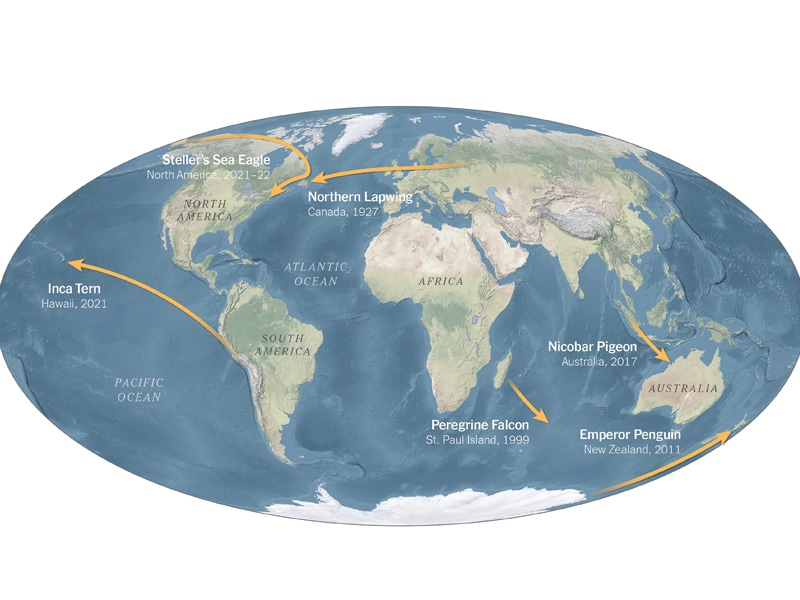
These birds aren't lost, they are adapting
Avian vagrant is a term that describes birds that wing their way well beyond their species's normal range of movement—humans have long marveled at such exotic stragglers
 Bird-watchers love to see vagrants, or birds that have traveled far outside their range — but scientists say they have a lot to teach us in a world facing ecological change. (The New York Times)
Bird-watchers love to see vagrants, or birds that have traveled far outside their range — but scientists say they have a lot to teach us in a world facing ecological change. (The New York Times)
From what we can tell, the Steller’s sea eagle trekking across North America does not appear homesick.
The bird has strayed thousands of miles from its native range in East Asia over the past two years, roving from the Denali Highway in Alaska down to a potential sighting South Texas before moving eastward and back north to Canada and New England. Its cartoonish yellow beak and distinctive wing coloration recently attracted crowds of rapt birders to Maine before turning up on April Fools’ Day in Nova Scotia.
“We live in a world of very little surprise,” said Nick Lund, outreach manager for Maine Audubon and creator of The Birdist blog. Catching a glimpse of a far-flung bird in one’s backyard, he said, “is like the purest form of joy.”
But the rogue Steller’s sea eagle isn’t just a lost bird: It is an avian vagrant, a term that describes birds that wing their way well beyond their species’s normal range of movement.
Humans have long marveled at such exotic stragglers — which experts also refer to as waifs, rarities, extralimitals, casuals and accidentals — and what they suggest about the biological importance of wandering. “The ‘accidentals’ are the exceptional individuals that go farthest away from the metropolis of the species; they do not belong to the ordinary mob,” Joseph Grinnell, a field biologist in California, noted in 1922. “They constitute sort of sensitive tentacles, by which the species keeps aware of the possibilities of aerial expansion.”
©2019 New York Times News Service







